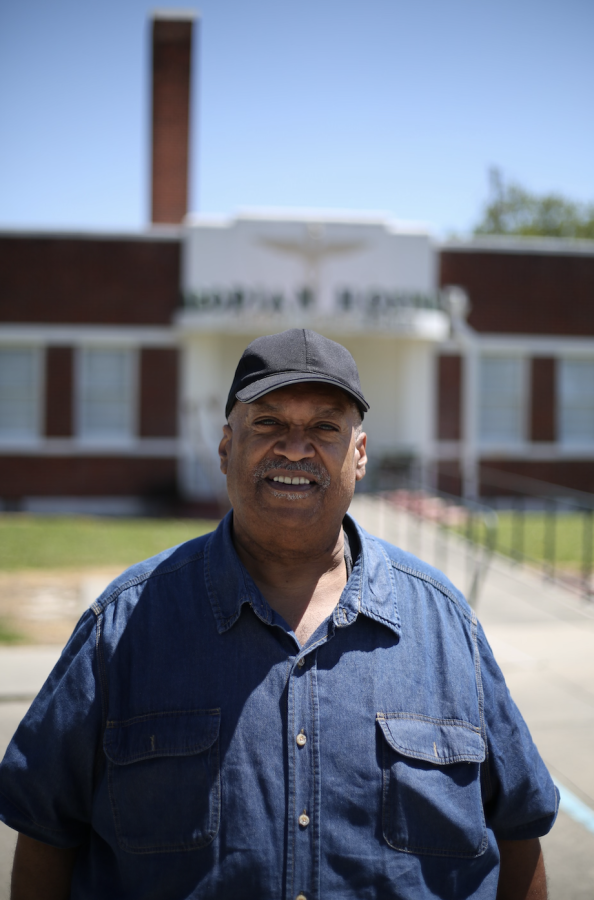Mound Bayou: A hidden history
In the early 1900s, the town of Mound Bayou had more millionaires in its population than any other Delta town based on the value of cotton, according to Mississippi Folklife. Today, located two hours outside of Vicksburg, Mississippi, Mound Bayou lays forgotten.
Students and teachers who attended the Mississippi Trip this spring had the opportunity to visit Mound Bayou and learn about its history firsthand through the residents who work to make its story more accessible to the broader community.
In an interview with The Urban Legend, Hermon Johnson Jr., who is a lifelong resident of Mound Bayou, said, “My brother sent me a 13-page summary of the history of Mound Bayou. I sat there and read that and it changed everything…but it really crystallized the fact that I needed to get back there [to Mound Bayou] because nobody was doing anything.” Together with his brother, Darryl, he founded the Mound Bayou Museum of African American Culture and History.
Mound Bayou was established in 1887 as one of the first Black incorporated municipalities in the United States. The town was founded by Isaiah T. Montgomery and his cousin, Benjamin T. Green. Both were formerly enslaved by Joseph Davis, whose brother, Jefferson Davis, was the president of the Confederacy.
In 1866, Joseph Davis named Benjamin Montgomery, the father of Isaiah Montgomery, manager of his plantation and the general store he had placed on the land. Due to this position of power, his son, Isaiah Montgomery, received an education from a tutor alongside white children living on the plantation. During the Civil War, the Davis family had deserted their land, and Benjamin Montgomery tended to it in their absence. After the Civil War, Joseph Davis sold the Hurricane Plantation and his property to Montgomery for $300,000.
Montgomery placed ads in the Vicksburg newspapers that said, “the Hurricane and Brierfield plantations proposes to organize a community composed exclusively of colored people, to occupy and cultivate said plantations, and invites the cooperation of such as are recommended by honesty, industry, sobriety and intelligence in the enterprise.”
The land was titled in the Montgomery’s name, and pieces were rented off to tenants to cultivate the land. By 1870, Benjamin Montgomery alone was worth $50,000, and Davis Bend, the colony that would later become Mound Bayou, was producing twice as many bales of cotton as it was just four years prior in 1867. This colony was short-lived, but Mound Bayou was established from its foundations.
In the mid 1880s, Isaiah Montgomery seized the opportunity to revive his father’s vision of an all Black colony. Montgomery and his cousin Benjamin Green purchased land from the railroad company, and they recruited settlers to rent parcels of it. The town developed slowly, but by 1898, Mound Bayou had been officially incorporated, allowing nearly 150 men to register as voters.
According to the museum’s historical document “Vicksburg to Mound Bayou,” Civil War general John Bell Hood said, “The Mound Bayou effort must not fail…a reputation of a race is at hazard.” Many saw the potential success of this town as a way to disprove beliefs about Black people in the U.S.
Throughout the early 1900s, Mound Bayou was bustling and exploding with profit. The community had built churches, general stores, a hospital and some of the best schools in the area. The town endured many challenges due to its proximity to nearby white communities, but the citizens of Mound Bayou continued to overcome each difficulty, gaining more and more power, both politically and personally.
While in Mound Bayou, attendees of the Mississippi Trip had the opportunity to visit this museum and meet Johnson Jr. Page Sparks ‘24 said, “What I enjoyed learning about the most and being in that space, was that each artifact had a really specific story. And there’s a really specific meaning as to why each thing was in there.”
The museum officially opened on July 10, 2021, and the community came together to create the museum’s collection of historical artifacts. Reena Evers, daughter of Medgar Evers, supported the Johnsons in obtaining the Medgar Evers collection from the Civil Rights Museum in Jackson, Mississippi. Medgar Evers originally moved to Mound Bayou to work at the insurance bank, but while living there, he became heavily invested in the civil rights movement.
Sparks said, “I just remember Hermon piecing all these parts of the story together that I had never heard of, and then all of a sudden at the very end of this 50 minute speech, it all came together, and we truly realized the significance of where we were and what [Mound Bayou] meant.”
Johnson Jr. said, “The most fulfilling thing for me is for us, [the Black community], to discover our value and for us to now elevate our value. And for us to get to the point where society understands our value.”


